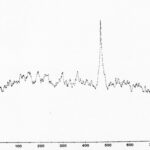Loose leaf tea, particularly Chinese varieties, is often lauded for its superior quality and flavor compared to tea bags. But are tea bags truly “bad”? This article delves into the differences between loose leaf tea and tea bags, examining factors like leaf quality, brewing methods, flavor profiles, and potential health benefits, especially in the context of Chinese tea culture.
Leaf Quality and Processing: Whole vs. Broken
A key distinction lies in the type of tea used. Tea bags predominantly contain broken leaves, fannings, and dust, often the remnants from processing higher-grade loose leaf teas. Chinese tea production, especially with renowned varieties like green tea, white tea, and oolong, emphasizes the preservation of whole leaves. These intact leaves retain more essential oils and complex compounds, contributing to a richer, more nuanced flavor.
Brewing: Space to Unfold
The brewing process significantly impacts the final cup. Loose leaf tea, given ample space in a teapot or infuser, allows the leaves to fully unfurl and release their flavors. This expansion is crucial for Chinese teas, where delicate aromas and subtle tastes are highly prized. Tea bags, often confined within small, restrictive spaces, hinder this expansion, potentially leading to a flatter, less expressive flavor profile.
Flavor and Aroma: Complexity vs. Simplicity
The difference in leaf quality and brewing translates directly to flavor and aroma. Loose leaf Chinese teas offer a spectrum of complex flavors, ranging from floral and fruity to earthy and nutty, often with lingering aftertastes. Tea bags, due to the use of broken leaves and limited brewing space, tend to produce simpler, less layered flavors. While convenient, they may lack the depth and intricacy characteristic of high-quality loose leaf teas.
Health Benefits: Potency and Antioxidants
Both loose leaf tea and tea bags can offer health benefits, primarily due to the presence of antioxidants. However, the concentration of these beneficial compounds can vary. Whole leaves in loose leaf teas generally retain higher levels of antioxidants compared to the broken leaves in tea bags. Certain Chinese teas, like green tea, are renowned for their potent antioxidant properties, potentially offering more pronounced health benefits when consumed as loose leaf.
Cost Considerations: Value vs. Price
While loose leaf tea might appear more expensive upfront, considering the number of infusions obtainable from high-quality leaves can shift the perspective. Many Chinese teas, especially oolong and pu-erh, can be steeped multiple times, yielding several cups from a single batch of leaves. This reusability can potentially make loose leaf tea a more economical choice in the long run, coupled with the superior flavor experience.
Conclusion: A Matter of Preference and Purpose
Ultimately, the choice between tea bags and loose leaf tea hinges on individual preferences and priorities. Tea bags offer undeniable convenience, ideal for quick and easy brewing. However, for those seeking a deeper exploration of tea, particularly the rich traditions and nuanced flavors of Chinese tea culture, loose leaf tea provides an unparalleled experience. While tea bags aren’t inherently “bad,” they often represent a compromise on quality and flavor compared to the potential of whole leaf teas.
FAQs about Tea Bags and Loose Leaf Tea
Is loose leaf tea healthier than tea bags? Loose leaf tea often contains higher concentrations of antioxidants due to the use of whole leaves.
Does loose leaf tea really taste better? Many find loose leaf tea more flavorful and nuanced due to the quality of leaves and better brewing conditions.
Is there more caffeine in tea bags or loose leaf tea? Caffeine content depends on various factors like tea type and steeping time. Finely ground tea in bags can sometimes release caffeine more quickly.
What’s the difference between a tea bag and a tea sachet? Sachets often use larger leaf pieces and pyramid shapes for better brewing, but loose leaf generally offers higher quality.
Is loose leaf tea better for the environment? Loose leaf tea generates less waste as it avoids extra packaging materials like bags, strings, and staples.
